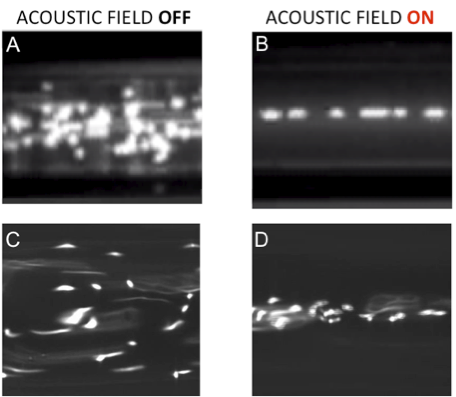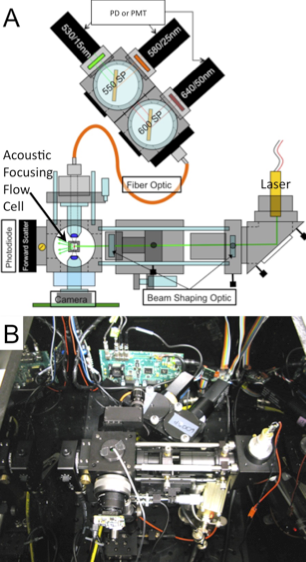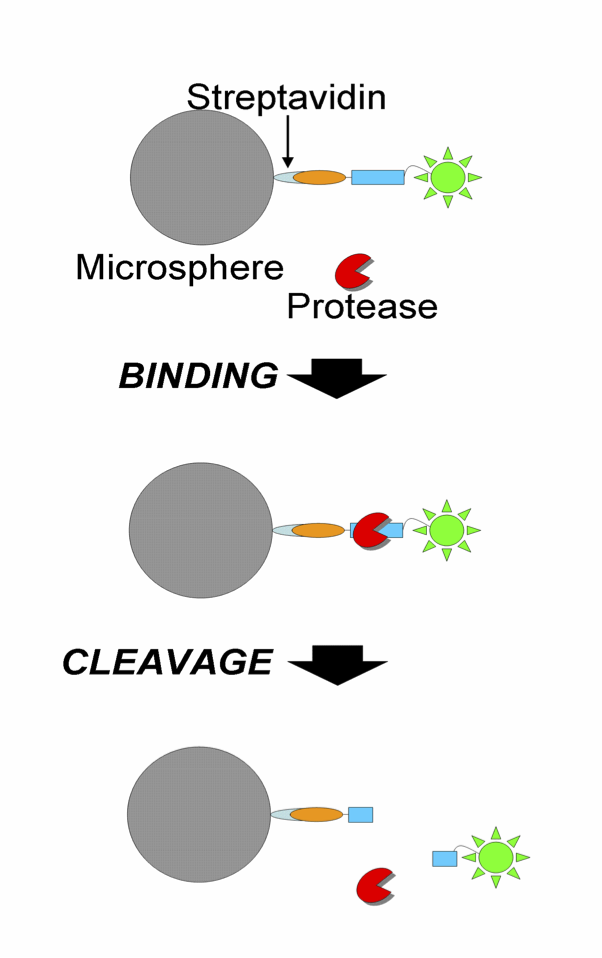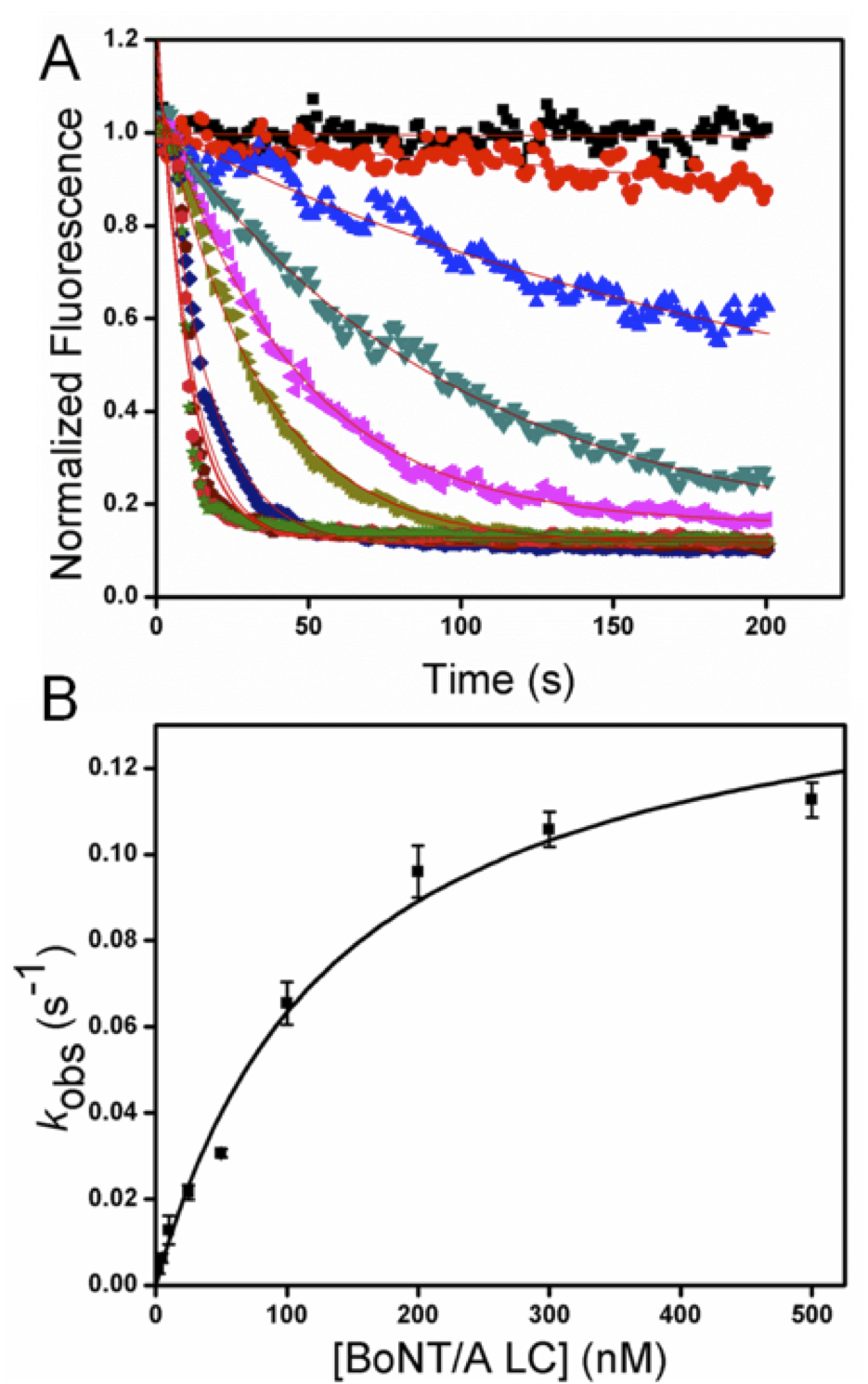Our research projects
We strive to perform high impact research while simultaneously providing
an outstanding training and mentoring environment for scientists of all
levels - including post-doctoral researchers, graduate students, undergraduates,
and even high school students. Our research has been divided into two main areas
broadly described as 1: Biomedical/Environmental/Process Instrumentation and Diagnostics
and 2: Biomolecular Engineering for Protease Studies, Screening, and Molecular Computation.
These are more fully described below along with short descriptions of recent funded projects
in these areas. Please scroll through and, if you are interested, drop us a message.


Current or Recently Funded Projects in the Area
TITLE: Collaborative Research: Enhanced imaging flow cytometry for plankton studies via acoustic focusing and emulsion microfluidics
SPONSOR: NSF/OCE
PERIOD OF PERFORMANCE: 09/15/2011 – 08/14/2014
This project will create an acoustic focusing module for use in an underwater submersible flow cytometer. This module must work with feedback control and little operator intervention. Its purpose is to increase the sample throughput by >10 fold for the underwater flow cytometer.
TITLE: Parallel systems for high throughput flow cytometry
SPONSOR: UNM GAP funding from STC and the Office of the Vice President of Research
PERIOD OF PERFORMANCE: 12/01/2012 – 11/30/2013
The goal of this project is to demonstrate proof-of-principle for an optical-based method for interrogating multiple parallel streams in a flow-based analysis system.
TITLE: The National Flow Cytometry Resource, Research Project 2, Next-Generation Technology for Optically Activated Large Particle Sorting
SPONSOR: NIH
PERIOD OF PERFORMANCE: 07/01/2007 – 03/31/2013
This project will develop new technologies to use flow cytometry to sort particles that are larger than 70 microns in diameter. We are exploring focusing approaches that are amenable to large particles as well as the development of stand off optical technologies for low-density parallel analysis. The focusing approaches and optical techniques are geared for particles as large as a micron.
TITLE: Low Cost Portable Flow Cytometry
SPONSOR: NIH
PERIOD OF PERFORMANCE: 08/01/2005 – 07/31/2012
This project developed the technology for a low cost portable flow cytometer for use in CD4+ T cell testing applications for resource poor areas of the world.


In this area we are interested the development of biomimetic in vitro and in vivo molecular assemblies for the study, detection, and screening of key enzymatic processes. Currently my focus is on proteases where my group is developing surface based molecular assemblies to study the mechanisms of key toxin and viral proteases. We are extending these efforts in to screening and detection approaches. Of particlar interest to my group are the underlying effects of diffusion, binding, and surface structure on a variety of enzymatic reactions. We are studying these effects with regards to proteases, which commonly exert their effect at surfaces, and will be expanding this to deoxyribozymes. For proteases, it is important to explore the basis for mechanistic differences seen at surfaces and in solution, as this will have implications for both general understanding and on optimal approaches for the development of protease active compounds via design or high throughput screening. With regards to deoxyribozymes, we are attempting to better understand how these reactions can be compartmentalized and sped up using surface based approaches. Both goals would significantly increase the applicability of deoxyribozymes in real world uses.
Current or Recently Funded Projects in the Area
TITLE: CDI-Type II: Collaborative Research: Computing with Biomolecules; From Network Motifs to Complex and Adaptive Systems
SPONSOR: NSF/ECC
PERIOD OF PERFORMANCE: 10/01/2010 – 09/30/2014
This project will develop biocompatible, DNA molecular sensors and actuators that will be of immediate use in pathogen detection, non-invasive diagnostics, and intelligent therapeutics. As the project progresses, these will be combined with ever more capable biomolecular learning machines we will develop, but they can also be used independently by other researchers or medical doctors.
TITLE: High-throughput multiplex microsphere screening for toxin protease inhibitors
SPONSOR: NIH/NCRR
PERIOD OF PERFORMANCE: 01/01/2011 – 12/31/2013
This project is developing and performing a screen for inhibitors of the proteases in conjunction with the UNM molecular libraries center. We have developed unique multiplex microsphere assays that require fluorescent fusion proteins and significantly increase the speed and information content of protease assays.